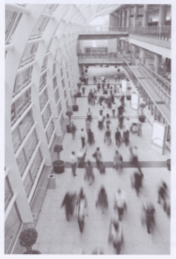A new way of making electricity
A. But that isn't the end of the story.
B. This kind of information is very useful for certain people.
C. Why not use the energy created by pedestrians instead?
D. However, one big problem could be cost.
E. And it's actually based on a simple idea.
F. This is especially true when it's been used in very busy areas.
G. But it soon became clear that this might not work.
H. This new system should work even better.
 Ever since the 19th century, when people were developing different ways of creating electricity, companies have looked for improved ways of producing power, using cleaner and more efficient methods.
Ever since the 19th century, when people were developing different ways of creating electricity, companies have looked for improved ways of producing power, using cleaner and more efficient methods.
Now a UK company called Pavegen has been working on technology that could be widely used in the future to produce electricity. 1 The company has developed a special type of floor, made of square tiles. Underneath each square, there's a system that can produce a certain amount of electricity very cheaply — from the energy created every time someone steps on it!
The creator of the floor, Laurence Kemball-Cook, came up with the idea when he was a student, and did some work experience with an energy company. The company asked him to investigate ways of providing street lighting in city centres, using energy from the sun to produce electricity.
2 One reason was that many city centres don't get enough sunlight, because of all the tall buildings. Then he thought of a better plan.
3 The right technology could be used to convert this energy into electricity — right under people's feet!
The design of the floor is actually extremely effective. 4 And the reason is that a lot of energy is produced simply because of the large numbers of people walking across the floor. In fact, the special squares are already in place in several locations with high numbers of pedestrians. These include big department stores and also an airport.
The Flooring can have other uses too, such as recording how many people visit a shopping centre at particular times. 5 For example, shop owners in the centre would be interested in knowing at which times of days they have the highest customer numbers. So the next time you visit a big shopping centre, have a careful look at the floor that you're walking across!



